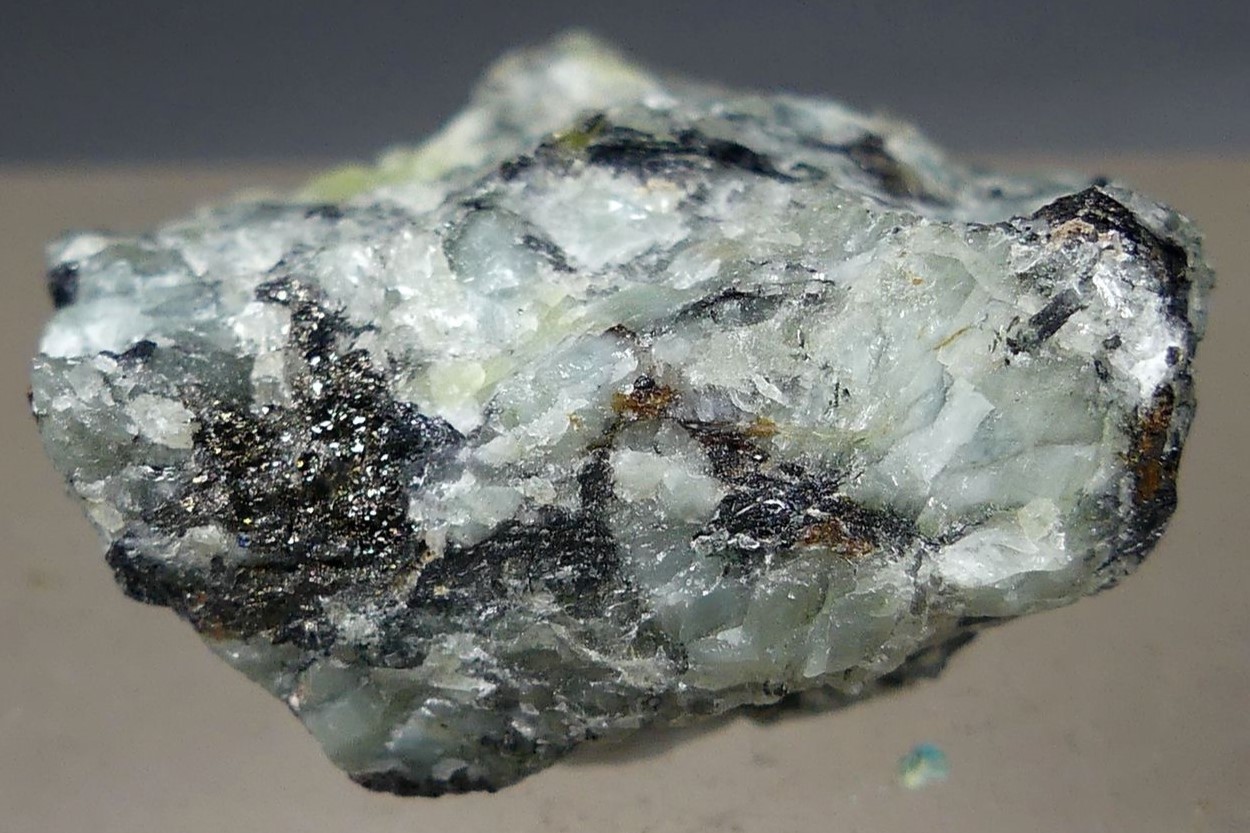
Djerfisherite is a rare mineral that sparks curiosity among geologists and mineral enthusiasts. Found primarily in meteorites, this mineral has a unique composition that sets it apart from more common minerals. What makes Djerfisherite so special? Its distinct greenish-yellow color and complex structure are just the beginning. This mineral contains a mix of elements like potassium, copper, iron, and sulfur, making it a fascinating subject for study. Why should you care about Djerfisherite? Understanding its properties can provide insights into the formation of celestial bodies and the early solar system. Whether you're a budding geologist or just someone who loves learning about the natural world, these 20 facts about Djerfisherite will surely captivate your interest.
Key Takeaways:
- Djerfisherite, a rare mineral found in meteorites and some rocks, helps scientists understand the early solar system and planetary formation. Its unique composition and physical properties make it a valuable subject of study.
- Named after a geochemist, Djerfisherite has a complex chemical formula and is primarily of scientific interest. Its formation in high-temperature environments and association with other minerals provide valuable insights into Earth's crust and mantle processes.
What is Djerfisherite?
Djerfisherite is a rare mineral with a unique composition. Found in meteorites and some terrestrial rocks, it has intrigued scientists for years. Let's dive into some fascinating facts about this mineral.
-
Djerfisherite was first discovered in 1966. Named after the American geochemist Daniel Jerome Fisher, it was identified in the Kola Peninsula, Russia.
-
It has a complex chemical formula. The formula is K6(Fe,Ni,Cu)25S26Cl, indicating it contains potassium, iron, nickel, copper, sulfur, and chlorine.
-
Djerfisherite is often found in meteorites. This mineral is commonly associated with iron meteorites, providing clues about the early solar system.
Physical Properties of Djerfisherite
Understanding the physical properties of djerfisherite helps in identifying and studying it. Here are some key characteristics.
-
It has a metallic luster. Djerfisherite shines with a metallic sheen, making it visually distinctive.
-
The mineral is opaque. Light does not pass through djerfisherite, contributing to its metallic appearance.
-
It has a Mohs hardness of 3.5 to 4. This means it is relatively soft compared to other minerals.
-
Djerfisherite is brittle. It breaks easily when struck, which can make handling it tricky.
Occurrence and Formation
Where and how djerfisherite forms is as intriguing as the mineral itself. Here are some insights.
-
Found in both terrestrial and extraterrestrial environments. While often associated with meteorites, it also occurs in some Earth rocks.
-
Forms in high-temperature environments. Djerfisherite typically forms in conditions exceeding 600°C.
-
Commonly found in association with other minerals. It often coexists with minerals like troilite and schreibersite.
Uses and Applications
Though not widely used, djerfisherite has some interesting applications and uses.
-
Primarily of scientific interest. Researchers study it to understand planetary formation and meteorite impacts.
-
Used in geochemical research. Its unique composition makes it valuable for studying chemical processes in the Earth's crust and mantle.
-
Helps in understanding the solar system's history. By analyzing djerfisherite in meteorites, scientists gain insights into the early solar system.
Interesting Facts
Some lesser-known but fascinating tidbits about djerfisherite.
-
It can contain trace amounts of gold. Some samples have been found with tiny inclusions of gold.
-
Djerfisherite crystals are usually small. They rarely exceed a few millimeters in size.
-
It has a cubic crystal system. This means its crystals form in a symmetrical, cube-like structure.
-
The mineral is named after a geochemist. Daniel Jerome Fisher's work in geochemistry earned him this honor.
Scientific Studies
Research on djerfisherite continues to reveal new information. Here are some highlights.
-
Studies have focused on its formation in meteorites. Researchers aim to understand the conditions that lead to its creation.
-
Geochemists analyze its composition. By studying its elements, scientists learn about the environments where it forms.
-
Djerfisherite provides clues about planetary differentiation. Its presence in meteorites helps scientists understand how planets separate into different layers.
The Final Word on Djerfisherite
Djerfisherite, a rare mineral, holds a unique place in the world of geology. Found mainly in meteorites and some terrestrial locations, it’s a potassium iron sulfide mineral with a distinctive golden-yellow color. Its rarity and unique properties make it a subject of interest for scientists and collectors alike. Understanding its formation helps researchers learn more about the conditions in space and the early solar system.
Whether you're a geology enthusiast or just curious about rare minerals, djerfisherite offers a fascinating glimpse into the complexities of our universe. Its discovery and study continue to provide valuable insights into both terrestrial and extraterrestrial processes. So next time you hear about meteorites or rare minerals, remember djerfisherite and its special role in the grand scheme of things.
Frequently Asked Questions
Was this page helpful?
Our commitment to delivering trustworthy and engaging content is at the heart of what we do. Each fact on our site is contributed by real users like you, bringing a wealth of diverse insights and information. To ensure the highest standards of accuracy and reliability, our dedicated editors meticulously review each submission. This process guarantees that the facts we share are not only fascinating but also credible. Trust in our commitment to quality and authenticity as you explore and learn with us.
